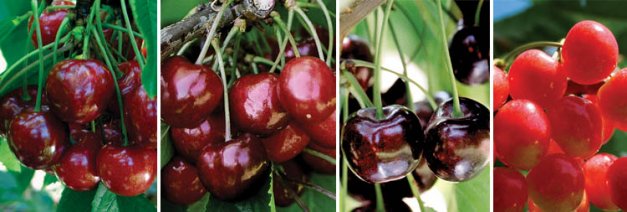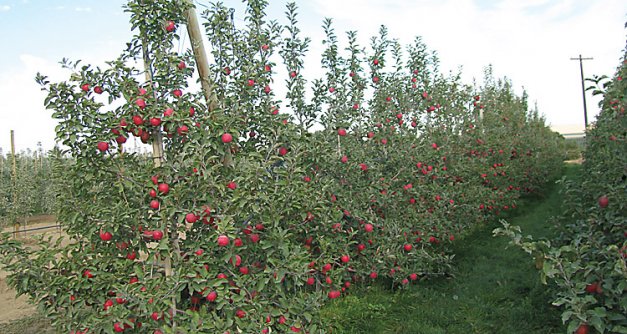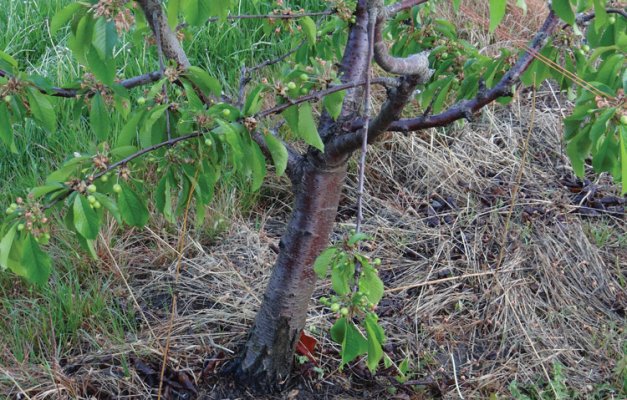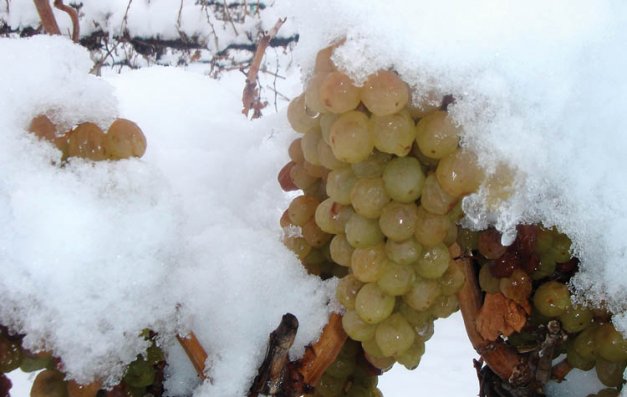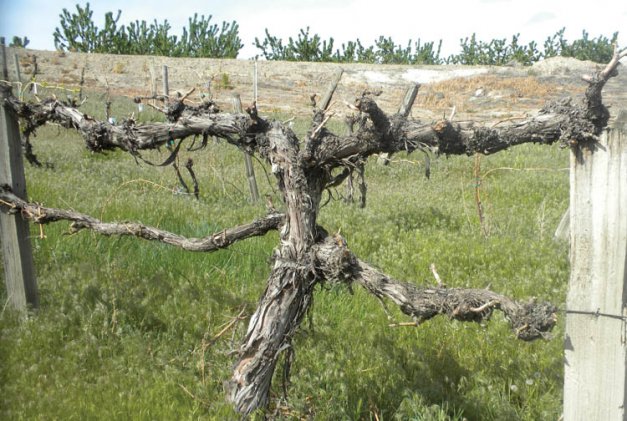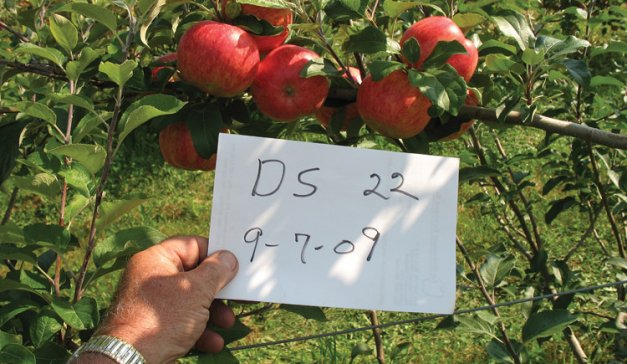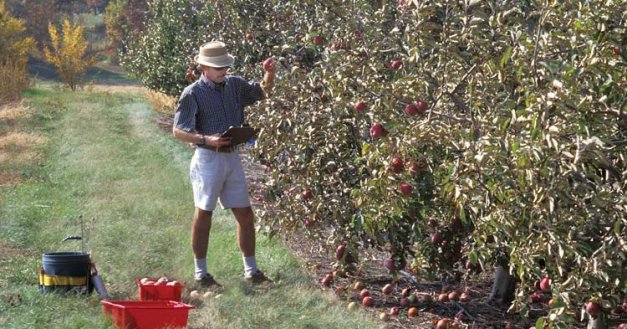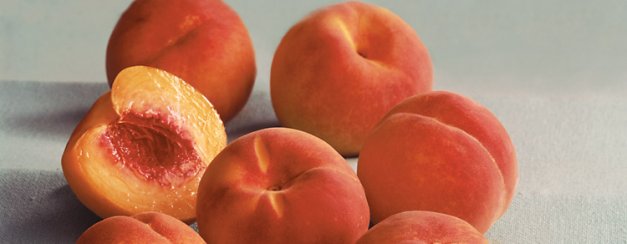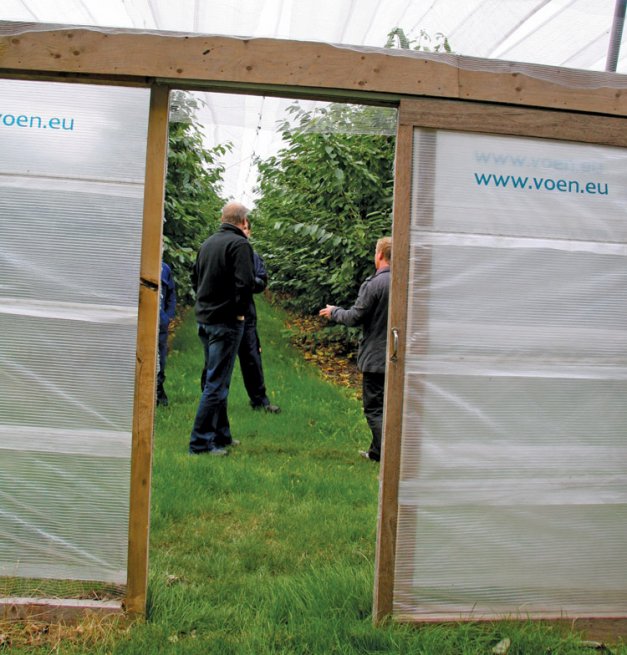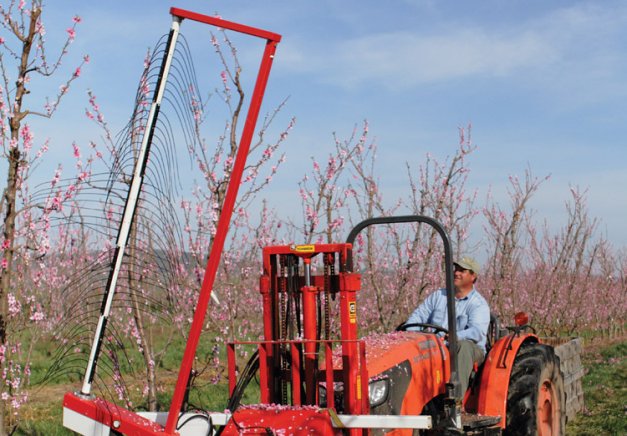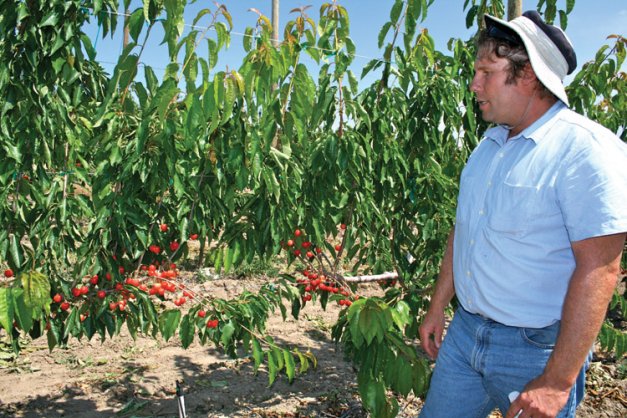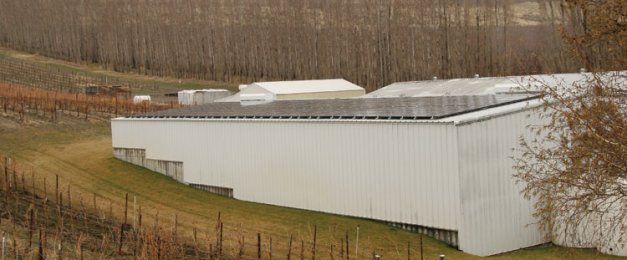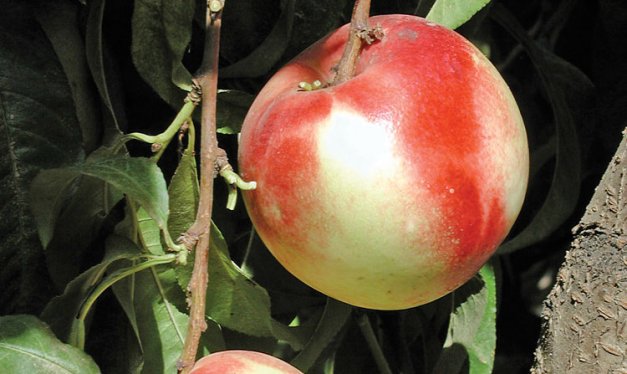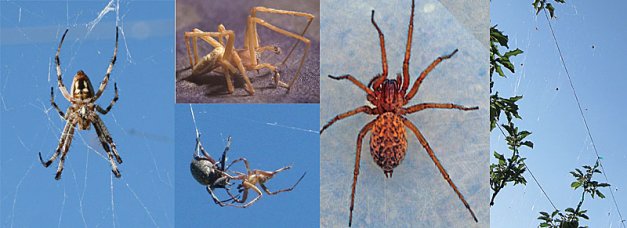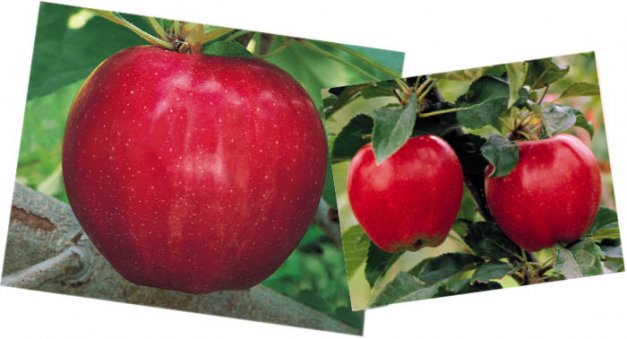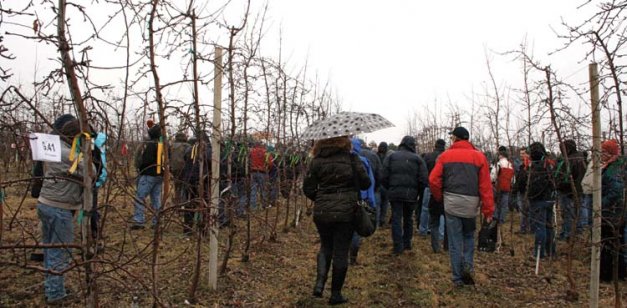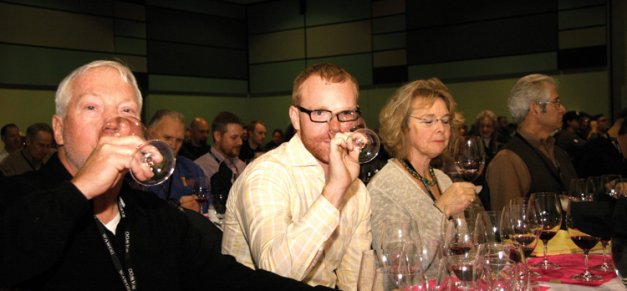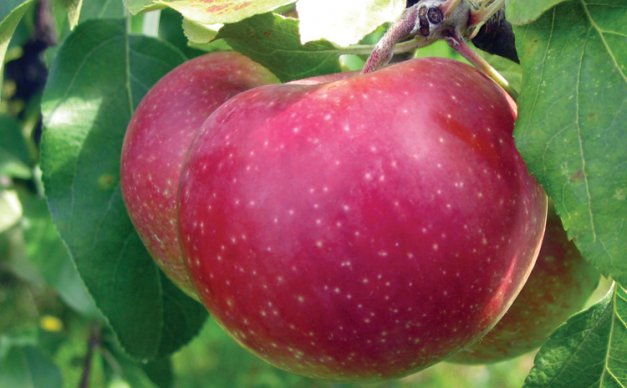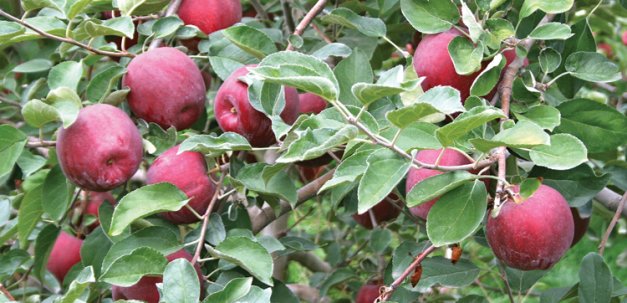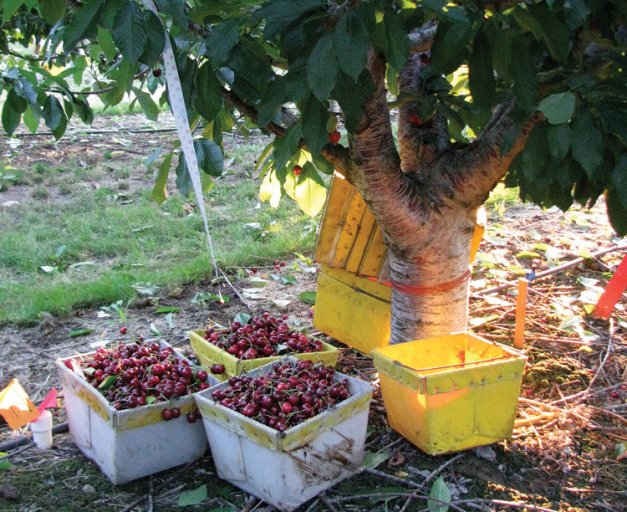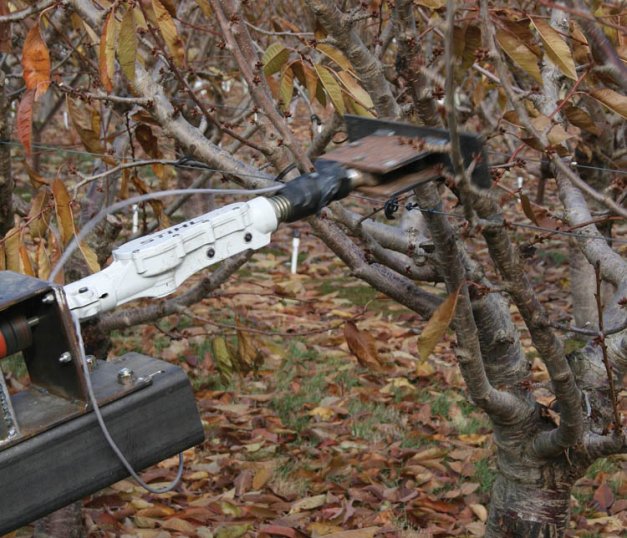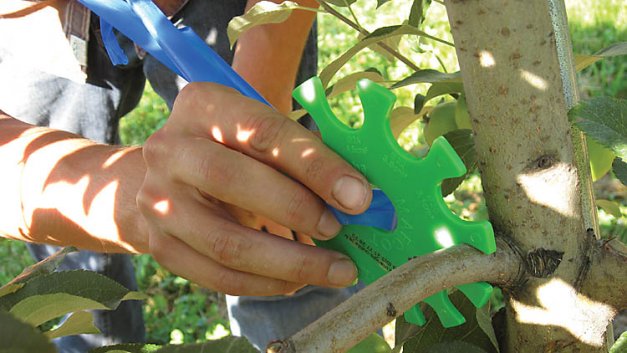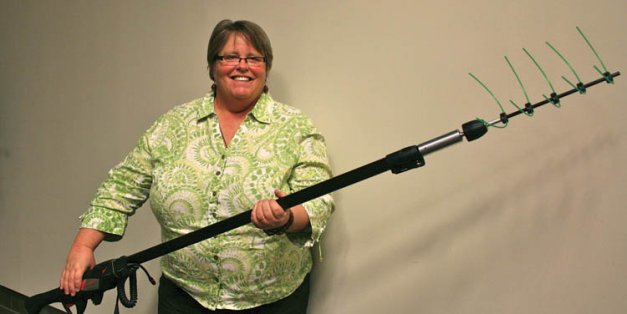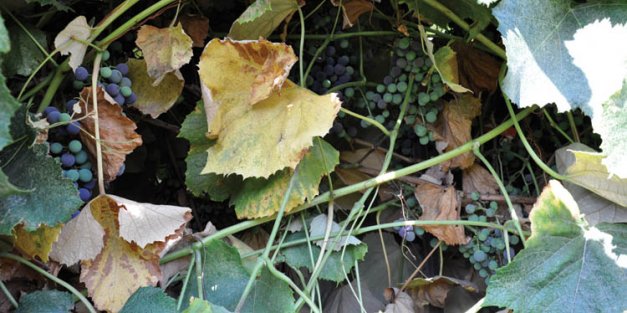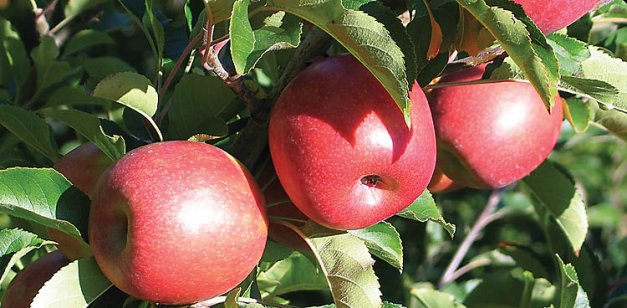ADVERTISEMENT
Saving resources
Rod Grams obtained EQIP funding to upgrade his irrigation system, and is now using less
Good to Know–Assessing new cherry varieties
Left to right: Kiona is an excellent-tasting early variety but lacks firmness. Santina is
WA 2 update
WA 2 in 2011 at Quincy, Washington, with a crop of 79 bins per
Dream blush cherry has dim future
When 8011-3 trees are three or four years old, cracking appears on the trunk
Last Bite–From Shangri-La
Apricots are dried on a Hunza Valley rooftop. On the flanks of the magnificent Karakoram
Muscat, old but new
Muscat grapes are used in a variety of wine styles, from off-dry to sweet to
Moscato madness
The Moscato craze started with Gallo's Barefoot Cellars, when it released a light, sweet wine
Muscat plantings on the rise
Muscat grape varieties, the hottest selling wines in America, have also been the hottest selling grape nursery stock. And while there’s been an uptick in Muscat plantings in Washington State, in general, the state’s wine industry is taking a cautious approach to the latest wine fad.
Substitute for SweeTango
Fred Wescott wanted to grow and market the apple that was later named SweeTango. He
DS 22 planned for this fall
Doug Shefelbine’s new apple, DS 22, may debut this September, marketed by Wescott Agri-Products,
The rush to redness
David Bedford Dr. David Bedford, the apple breeder at University of Minnesota where the original
Succession of cherries
Agriculture and Agri-Food Canada’s fruit breeding program at Summerland, British Columbia, is expected to release
World awaits B.C. cherries
High quality, self-fertile cherry varieties developed in British Columbia, Canada, have become standards in the
MCP results influenced by temperature
Jim Mattheis Many factors influence how SmartFresh (1-methylcyclopropene) works, which means that there are several
Breeding peaches
New peach varieties from MSU are expected to fill the gaps in the profile of
Not just a raincover
This Dutch cherry orchard has a rain cover and is enclosed on the sides with
Finding the ideal peach orchard
Jim Schupp (on tractor) took an active role in evaluating the Darwin blossom thinner and
Good Stuff
Stickers link to grower videos Thanks to new data bar technology, shoppers anywhere in the
Good to Know: Irrigation scheduling
Troy Peters, left, checks the irrigation scheduler on his phone in a cherry orchard with
Delicate cherry finds a niche
The blushed-yellow Rainier cherry was released by Washington State University more than 50 years ago
Early Robin, early blush
Early Robin looks set to become an important variety in the Pacific Northwest, as growers try to get a jump on the blushed-cherry deal.
Future pear research area
AVG could be a valuable new tool, along with NAA, for preventing premature fruit drop
New group begins work
A new marketing and research group has consolidated the California cherry industry into one voice,
Neonicotinoids and bees
A spate of new studies came out this spring, all of them seeking to link
Sustainability can be economical
More than 160 photovoltaic panels rest on the rooftop of Powers Winery, generating about 20
Last Bite
Arctic Snow, patented by Zaiger Genetics and sold by Dave Wilson Nursery, ripens late August
Watch out, codling moth!
Left: A female Neoscona oaxacensis orb-weaving spider. Top: Cheiracanthium spiders are known as yellow sac
What do rootstocks do
Apple growers first became interested in grafting scions onto rootstocks when they realized that dwarfing
Fruit drop is not simple to manage
Dr. Rongcai Yuan made important contributions to understanding fruit abscission processes. He died a year
Newer herbicides join the arsenal
Among the newer herbicides that fruit growers should look at are Treevix, Alion, Matrix, Spartan,
Last Bite: Gala breeder put flavor first
Gale Gala is a sport of Royal Gala discovered by Wally Gale in Wenatchee, Washington,
Wide scope for rootstock research
International Fruit Tree Association members tour a research plot at Wapato, Washington, where a wide
Growers vote on special assessment
Washington State tree fruit growers will be asked to pay a special research assessment to
Root2Fruit group will request research funding
A group of scientists from around the country aims to develop new tree fruit rootstocks
Who’s eating codling moth?
This article is part of a series on the multistate project “Enhancing Biological Control in
DNA test identifies pathogens in tainted foods
Fruit or vegetable packers concerned that their produce may be contaminated with unsafe pathogens will
MCP alternative tested
Amit Dhingra’s research shows that the new product delays ripening differently than MCP. An organic
Underground drip irrigation serves two purposes
Water is plentiful in the fruit-growing area along Lake Michigan’s eastern shore, so it’s not
Are Washington Merlots Sideways?
Harold Thoreen of Antoine Creek Vineyard near Chelan, Washington, son Colin, and Harold’s wife Suzanne
Snow apple of Quebec
The Fameuse is a taste sensation, but its bad habits doomed the cultivar
Merlot’s place in Washington
Merlot grapes have had a strong presence in Washington State since 1956 when the late
WSU releases promising apple
WSU’s newest variety, WA 38, is a cross of Enterprise and Honeycrisp. Geraldine Warner Washington
Irrigating cherry orchards efficiently
Lapins fruit quality was excellent in all three years of the deficit irrigation study. Todd
Cherry research project progresses
WSU engineers are developing a vibrating actuator that will be used with a mechanical harvester
Gauging apple crop load
When using the Equilifruit, it should fit tightly around the selected limb, about an inch
Mechanical thinning of cherries
The Electroflor looked promising for mechanically thinning cherries in tests that Karen Lewis, WSU extension
High density not for Concords
A Washington State University study found that traditional spacings for juice grapes—around six feet between
Cripps Pink is in expansion mode
Lady in Red is one of several highly colored strains of Cripps Pink that will
Heed global trends
The global food business is increasingly complex, with new players, new linkages, and cause-and-effect reactions
Bee Informed Partnership
After five years of annual colony losses near or above 30 percent, beekeepers have settled

